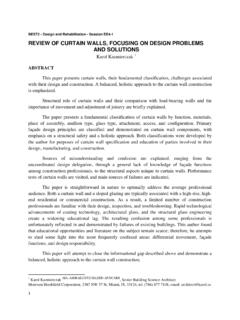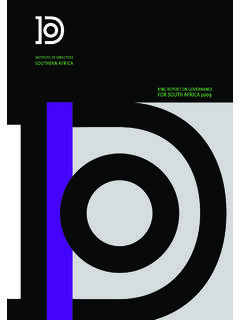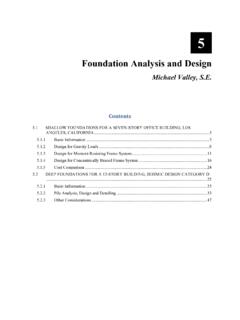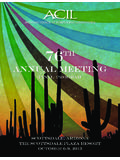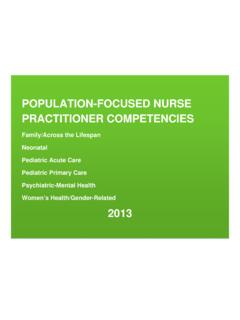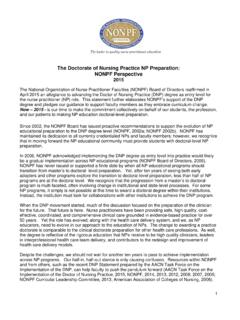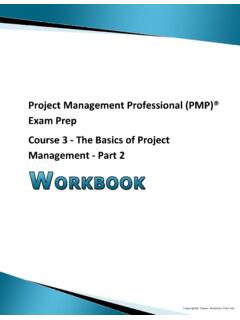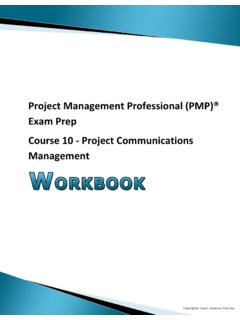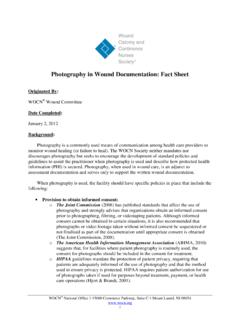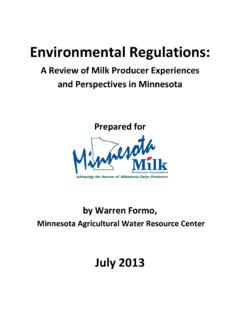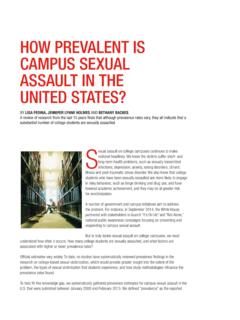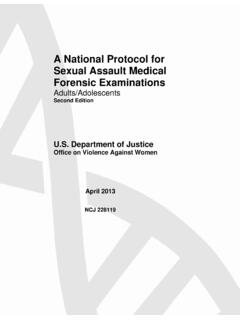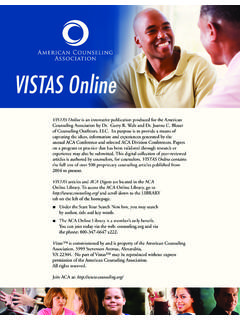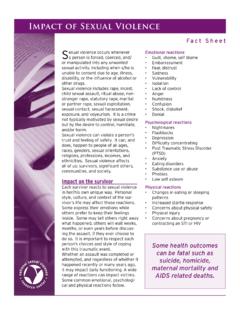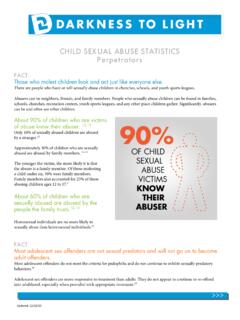Transcription of Sexual Assault Nurse Examiner (SANE) EDUCATION …
1 EDUCATION GUIDELINES Sexual Assault Nurse Examiner (SANE) Task Force Chair Megan Lechner, MSN, RN, CNS, SANE-A, SANE-P Task Force Members Sherry Britton-Susino, RN, SANE-A, SANE-P Diane Daiber, BSN, RN, SANE-A, SANE-P Kim Day, RN, SANE-A, SANE-P Diana Faugno, MSN, RN, CPN, SANE-A, SANE-P, FAAFS, DF-IAFN Kathy Gill- Hopple, PhD, RN, SANE-A, SANE-P, AFN-BC Kathleen Maguire, JD, BSN, BS, RN Kim Nash, BSN, RN, SANE-A, SANE-P Jen Pierce-Weeks, RN, SANE-A, SANE-P Ecoee Rooney, DNP, RN-BC, SANE-A TABLE OF CONTENTS Introduction .. 1 Purpose of the Guidelines.
2 3 Defining Patient Populations .. 4 Theoretical Framework .. 5 I. Roy s Adaptation Model of Nursing .. 5 II. Benner s From Novice to Expert Theory .. 6 III. Duffy s Quality Caring Model .. 7 Instructional Methodologies .. 8 I. Classroom EDUCATION .. 8 II. Web-Based EDUCATION .. 9 III. Simulation .. 9 Sexual Assault Nurse Examiner (SANE) EDUCATION Requirements (Overview) .. 10 Coursework Content .. 10 Recommendations for Instructors .. 11 Instructors for Adult/ adolescent Patient Populations .. 12 Instructors for Pediatric/ adolescent Patient Populations.
3 13 Setting Up Your Course (At-a-Glance) .. 14 Section I: Adult/ adolescent Sexual Assault Nurse Examiner (SANE) EDUCATION Guidelines .. 15 Adult/ adolescent Didactic Content .. 15 Adult/ adolescent Didactic Content Target Learning Topics .. 16 I. Overview of Forensic Nursing and Sexual Violence .. 17 II. Victim Responses and Crisis Intervention .. 19 III. Collaborating with Community Agencies .. 20 IV. Medical Forensic History Taking .. 21 V. Observing and Assessing Physical Examination Findings .. 22 VI. Medical Forensic Specimen Collection .. 24 VII.
4 Medical Forensic Photography .. 26 VIII. Sexually Transmitted Disease Testing and Prophylaxis .. 27 IX. Pregnancy Risk Evaluation and Care .. 28 X. Medical Forensic Documentation .. 29 XI. Discharge and Follow-Up Planning .. 31 XII. Legal Considerations and Judicial Proceedings .. 31 Adult/ adolescent Clinical Preceptorship Content .. 35 Optional Preceptorship Content .. 39 Section II: Pediatric/ adolescent Sexual Assault Nurse Examiner (SANE) EDUCATION Guidelines .. 40 Pediatric/ adolescent Didactic Content .. 40 Pediatric/ adolescent Didactic Content Target Learning Topics.
5 43 I. Overview of Forensic Nursing and Child Sexual Abuse .. 44 II. Victim Responses and Crisis Intervention .. 45 III. Collaborating with Community Agencies .. 47 IV. Medical Forensic History Taking .. 48 V. Observing and Assessing Physical Examination Findings .. 49 VI. Medical Forensic Evidence Collection .. 52 VII. Medical Forensic Photography .. 55 VIII. Sexually Transmitted Disease Testing and Prophylaxis .. 56 IX. Pregnancy Risk Evaluation and Care .. 57 X. Medical Forensic Documentation .. 58 XI. Discharge and Follow-Up Planning .. 60 XII.
6 Legal Considerations and Judicial Proceedings .. 61 Pediatric/ adolescent Clinical Preceptorship Content .. 64 Optional Preceptorship Content .. 68 Works Cited .. 69 Appendix 1: Adult/ adolescent Sexual Assault Nurse Examiner Initial Competency Validation Form .. 80 Appendix 2: Pediatric/ adolescent Sexual Assault Nurse Examiner Initial Competency Validation Form .. 87 Appendix 3: SANE Didactic Course Educational Planning Tables .. 93 Resources .. 94 2018 International Association of Forensic Nurses Sexual Assault Nurse Examiner (SANE) EDUCATION GUIDELINES 1 International Association of Forensic Nurses Sexual Assault Nurse Examiner (SANE) EDUCATION Guidelines INTRODUCTION The primary purpose of the International Association of Forensic Nurses Sexual Assault Nurse Examiner (SANE)
7 EDUCATION Guidelines is to help the Sexual Assault Nurse Examiner meet the medical forensic needs of those who have been affected by Sexual violence, including individual patients, families, communities, and systems. Registered nurses who perform medical forensic evaluations must receive additional and specific didactic and clinical preparation to care for adult, adolescent , and pediatric patients following Sexual violence or Assault . The Sexual Assault Nurse Examiner practicing within recommendations set forth in the Sexual Assault Nurse Examiner (SANE) EDUCATION Guidelines uses the nursing process and applies established evidence-based standards of forensic nursing practice to ensure that all patients reporting Sexual violence and victimization receive a competent medical forensic examination, taking into consideration developmental, cultural, racial, ethnic, gender identity, Sexual , and socioeconomic diversity.
8 Given the prevalence of trauma among patient populations, the IAFN recognizes the criticality of the caregiver s use of a trauma-informed approach to care, regardless of the patient s presentation or demeanor. One in six women has been the victim of an attempted or completed Sexual Assault in her lifetime, and one in five girls by the age of 13 has been sexually abused (Agency for Healthcare Research and Quality, 2016). According to Raja et al. (2015), the four underlying principles of providing trauma-informed care (TIC) are: 1) realizing the prevalence of traumatic events and the widespread impact of trauma; 2) recognizing the signs and symptoms of trauma; 3) responding by integrating knowledge about trauma into policies, procedures, and practices; and 4) seeking to actively resist re-traumatization.
9 The Center for Healthcare Strategies (2017) finds that small changes in physical and emotional aspects of the care environment ( , involving patients in their own care) and the attitudes of caregivers ( , including patients in decisions) yield positive results in fostering safety and trust. The concept of TIC must be considered in all aspects of EDUCATION related to the care provided to patients who have experienced Sexual Assault . Although not explicitly listed in the course outline as a stand-alone topic, the concept of TIC is intended to be interwoven throughout the 2018 International Association of Forensic Nurses Sexual Assault Nurse Examiner (SANE) EDUCATION GUIDELINES 2 didactic course in its entirety and to serve as a foundational element of the care that SANEs provide.
10 The nursing process is a critical thinking model that includes assessment, diagnosis, outcomes identification, planning, implementation, and evaluation, and is fundamental to the practice of SANEs. According to the American Nurses Association s Nursing: Scope and Standards of Practice, diagnosis is a clinical judgment about the healthcare consumer s response to actual or potential health conditions or needs. The diagnosis provides the basis for determination of a plan to achieve expected outcomes. Registered nurses utilize nursing and medical diagnoses depending upon educational and clinical preparation and legal authority (American Nurses Association, 2015).
